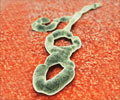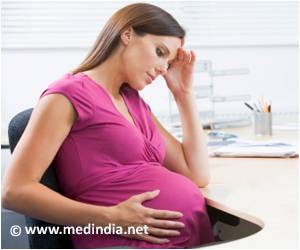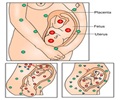- Ebola virus disease (EVD) caused by the Ebola virus is a potentially life-threatening infection and there have been several outbreaks, the largest recorded one that occurred in West Africa between 2014-16 resulting in over 28,000 cases and 11,000 deaths
- Current knowledge on Ebola virus disease has led to better understanding of managing individual cases, diagnosis and infection control in hospitals, the role of vaccinations as well as psychosocial care. However, knowledge about Ebola in pregnancy still remains painfully low
- More studies that include pregnant women are needed to gain a better understanding on how Ebola affects pregnancy so that more effective control measures to prevent and control Ebola in the pregnant woman and her baby can be evolved in future
Read More..
Available data on Ebola in pregnancy, although low show sufficient reason to be concerned about and to institute remedial measures
- Women found to have higher rates of infection compared to men. The reason may be increased vulnerability or getting the infection while caring for affected family members
- Some studies suggest the death rate in pregnant women with Ebola may be as high as 90% although more data is needed to validate this observation
- In almost all EVD cases in pregnancy the developing fetus in the womb is affected resulting in miscarriage, still birth or neonatal death
- Following an EVD outbreak, pregnant women are at increased risk of mortality and morbidity due poor general health and increased susceptibility to infections in general and lack of antenatal care due to diversion of health personnel to attend to the outbreak, closure of hospitals to control spread of infection and reluctance to go to hospital due to lack of trust in the healthcare system
- Obstetrical units may be a major source of EVD transmission due to high risks associated with contact with blood and body fluids during childbirth as well as delayed diagnosis further enhancing transmission. Interestingly, in the latest outbreak in the Congo Republic, the transmission of infection within the hospital was traced to an infected woman who underwent cesarean section delivery
Gaps in Existing System and Potential Ways to Overcome
Given the above-mentioned issues of concern related to EVD in pregnancy, the existing gaps in the system must be identified and plugged to ensure effective care of the pregnant woman resulting in healthy mother and baby.- Recently issued recommendations by an expert panel for supportive care of cases admitted to Ebola treatment units did not include care of pregnant women
- Although, vaccination has been shown to be key in Ebola preventive and control measures, pregnant women have largely been left out of vaccination trials due to fear of including them and very little data is available on the effectiveness of vaccination in pregnancy. In fact the WHO has recommended against vaccination of pregnant women
- Limited data are currently available on the care of pregnant women who had previously been infected especially since prolonged persistence of the virus in the body has been documented
- More research is needed into the societal barriers that prevent EVD survivors from resuming their normal lives. Such barriers include emotional stress, underlying physical and mental health issues, and gender based discrimination, all of which are amplified in women, especially pregnant women
- Contraception and family planning service in a region already burdened by frequent Ebola outbreaks may not be sufficient, resulting in unplanned pregnancies and consequent risk
Conclusion
Current reports suggest that the available health care system remains unprepared to care for the pregnant woman with Ebola. To change this, existing maternal and obstetric health services should be strengthened and more data gathered to ensure effective control and prevention of Ebola in pregnancy.Reference:
- Pregnant Women and the Ebola Crisis - (https://www.nejm.org/doi/full/10.1056/NEJMp1814020?query=featured_home)
Source-Medindia
















